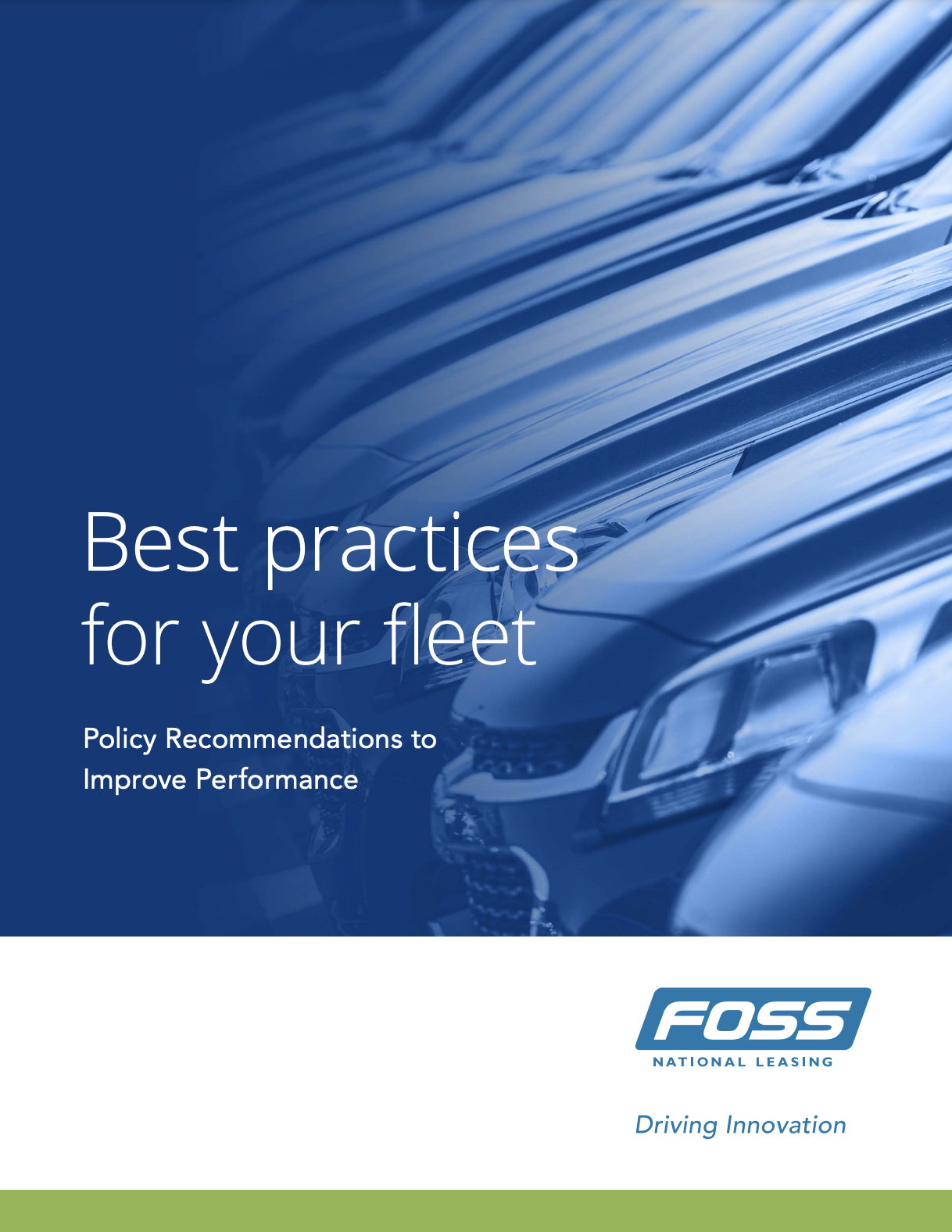

As President of Canada’s largest privately-owned fleet management company, I have a comprehensive view of the challenges fleet operators face.
Whether it’s a government fleet of 800 vehicles or a landscaping firm with 15, there are common issues all fleets share. In the end, it’s all about boosting efficiency and improving fleet driver safety. Because as we all know, the safer and more efficient the driver is, the more productive they are.
A big concern for fleet managers is also finding ways to reduce fleet costs. You may have heard that adopting electric vehicles into your fleet can lower your overall fuel costs. And while this is true, there are other aspects of EV adoption that also need consideration.
So I’d like to start the conversation with my thoughts on electric vehicles, and then look at how improving driver behaviour can save you money, no matter what vehicle drivers use.
BEYOND FLEET OPERATING COSTS: SHOULD YOU ADOPT ELECTRIC VEHICLES?
Before we look at driver behaviour, let’s talk about electric vehicles. It’s a topic that’s certainly on everyone’s mind these days. There’s no doubt that zero-emission vehicles are the future. And there is lots of data out there that shows they can reduce a fleet’s fuel and maintenance costs.
The real question to ask is, “Are they ready to be deployed into a fleet situation now?” I believe they are not ready for wide-scale adoption yet. It’ll take another couple of years for the technologies, infrastructure, and protocols to mature before we start seeing them in larger numbers in fleets.
What’s important for all fleet operators to understand is that this wave of new vehicles is indeed coming. Fleet managers need to start including the topic of electric vehicles in their conversations about fleet management.
I strongly recommend that you keep an eye on this technology and think about putting a small number of e-vehicles into your fleet. (Canada's new EV incentives can help you do that.)
That way you can assess the technology in your unique operating situation. This will allow you (along with your drivers) to become familiar with the vehicles and their operational issues. At the same time, you can develop company protocols associated with things like recharging infrastructure, costs, and reimbursement.
Another point to consider is that, putting e-vehicles into your fleet allows you to demonstrate “eco commitment” from a marketing perspective. This is definitely not a bad thing in a competitive environment. Consumers like to see organizations making a commitment to be eco-focused, so adding EVs may be a differentiator that can pay a dividend.
Lower fleet costs quickly by focusing on driver behaviour
If the real goal of putting EVs into your fleet is to be more cost efficient and sustainable, then there are many other things you can do to reduce fleet operating costs and fine-tune your operations - before considering EVs.
For example, we often see fleet managers looking for lower costs on the purchase and lease of new vehicles. This is understandable. But in many cases, they’re not careful enough about who they then allow to drive those vehicles. The wrong employee can end up driving the vehicle into the ground!
So it’s important to know that fuel economy, wear and tear on the vehicle, accident liability, and employee productivity are a critical part of the overall cost of running a vehicle. You can make the most gains in efficiency by looking at these areas.

Also, I highly recommend fleet managers embrace the following three tips.
1. Generate driver abstract reports at least once a year
A driver abstract is a governmental report that documents the driving history of a person. If you don’t check these reports regularly, you won’t know if your employees are driving badly. Without these reports, it’s easy for employees to hide their bad driving from you.
And I think it goes without saying that bad drivers are costly. Armed with driver abstract reports, you’ll be able to provide corrective action in the form of driver safety training to those who need it. Bad drivers are costly, but that doesn’t mean they’re bad employees. They just need some guidance.
2. Develop a company driving policy to keep drivers safe
It may sound like a big project, but if you want to be more efficient, dedicate some time to creating a company driving policy. Even if you already have one, you’ll need to update it, as Canada has now legalized cannabis and there is also increasing liability related to distracted driving.
Make sure your completed policy doesn’t just collect dust in the filing cabinet. Ensure employees are aware of their responsibility and the consequences of their driving behaviour. This effort will be rewarded if an impaired driver causes an accident - or a death - that results in a legal situation. Just imagine the costs associated with that. These kinds of legal costs can cripple companies.
3. Consider telematics to increase employee productivity
Our experience has been that telematics isn’t about identifying bad drivers, although the technology allows you to do this. A key benefit of telematics is simply that it identifies bad driving behaviour.
A client of ours recently launched a pilot program by adding telematics to several vehicles in their fleet. The drivers were educated on the technology, and they signed statements acknowledging their behaviour would be tracked.
The results were shocking. One driver was consistently clocked at speeds above 120 km within city limits. Another regularly returned to their home between 10 am and 2 pm when they should have been on the road working. That same driver then complained that they never had enough time to accomplish what the dispatcher had assigned.
After rolling this out to their entire fleet, the company saw a 7% to 9% increase in the productivity of their driver workforce. The money involved is serious and more than offset the cost of their telematics system.
You can also teach drivers about the effects of hard braking and rabbit starts. Telematics is a good tool to help improve driver behaviour which can lower not only fleet operating costs but the overall costs in the organization.
Final Thoughts
It goes without saying - managing a fleet effectively is extremely complex. Not only are fleet managers challenged with streamlining operations, improving efficiency, and reducing costs.
You now need to learn about new zero-emissions technologies and decide whether they are right for your fleet.
It all starts with taking small actions now that will help you meet your goals faster. The first place to look is with your drivers’ behaviour. Putting systems in place to improve driving will lay the foundation for greater efficiency and lower fleet management costs. Then, no matter what vehicles you have in your fleet, you can feel confident that your drivers are helping the company meet its goals - rather than creating more unnecessary costs.
Next Step:
Download our guide - Best Practices for Your Fleet: Policy Recommendations to Improve Performance. It provides proven advice on how to optimize your company driving policy, and better protect your company.
Get to Know the Author
Ex-President
Jeff Hartley has served as President of Foss National Leasing from 2002 till 2024. Jeff has over 25 years experience in the financial industry. Prior to joining Foss National Leasing, Jeff was the President of Volvo Commercial Finance from 1997-2000 and was Vice President at GE Capital from 1987-1996. Jeff has also been involved in different scales of operations ranging from a start-up business to a $750 million asset organization.
Meet our team







